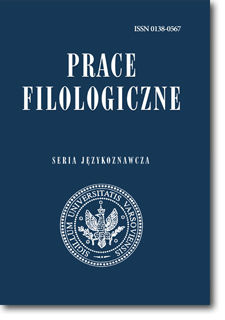Practical Applications of the National Corpus of Polish
Practical Applications of the National Corpus of Polish
Author(s): Rafał L. Górski, Barbara Lewandowska-Tomaszczyk, Mirosław Bańko, Piotr Pęzik, Marek Łaziński, Adam PrzepiórkowskiSubject(s): Language and Literature Studies
Published by: Wydział Polonistyki Uniwersytetu Warszawskiego
Keywords: korpus referencyjny; język polski; leksykografia; gramatyka; poradnictwo językowe; tłumaczenie; reference Corpus; Polish; lexicography; grammar; language counselling; translation
Summary/Abstract: The paper outlines the basic applications of the National Corpus of Polish in lexicography, academic courses of grammar, language counseling and translation studies. The usefulness of the corpus in lexicography – as a tool enabling meaning extraction and providing suitable quotations – is quite evident, and it is best depicted in the choice of institutions involved in the project (a publishing house being one of them) and its interrelations with the project of the “Great Dictionary of Polish” (www.wsjp.pl). Similarly, the NKJP, being a morphosyntactically annotated and fully disambiguated corpus, proves unmistakably highly useful while teaching Polish inflection and syntax, as it offers a possibility of confronting the sets of grammatical principles with the frequency of a particular grammatical construction. Queries making use of regular expressions may be helpful while teaching phonology, and it facilitate the verification of the stereotype about the abundance of consonant clusters in Polish. The aforementioned types of queries are supported mainly by the Poliqarp concordancer, while the quick and user-friendly PELCRA search engine, which offers additional information on time profile and text register, is a helpful resource in the study of Polish lexicon, e.g. language correctness, stylistic and axiological features, as well as gender asymmetry. The corpus may assist language counseling (not only with respect to feminine nouns) and courses in translation, for the time being mainly as far as Polish–English translation. The multiple applications of the NKJP (apart from its use in projects pertaining to information technology or linguistics) show that it is reasonable to retain the two independent concordancers.
Journal: Prace Filologiczne
- Issue Year: 2012
- Issue No: 63
- Page Range: 231-240
- Page Count: 10
- Language: English

